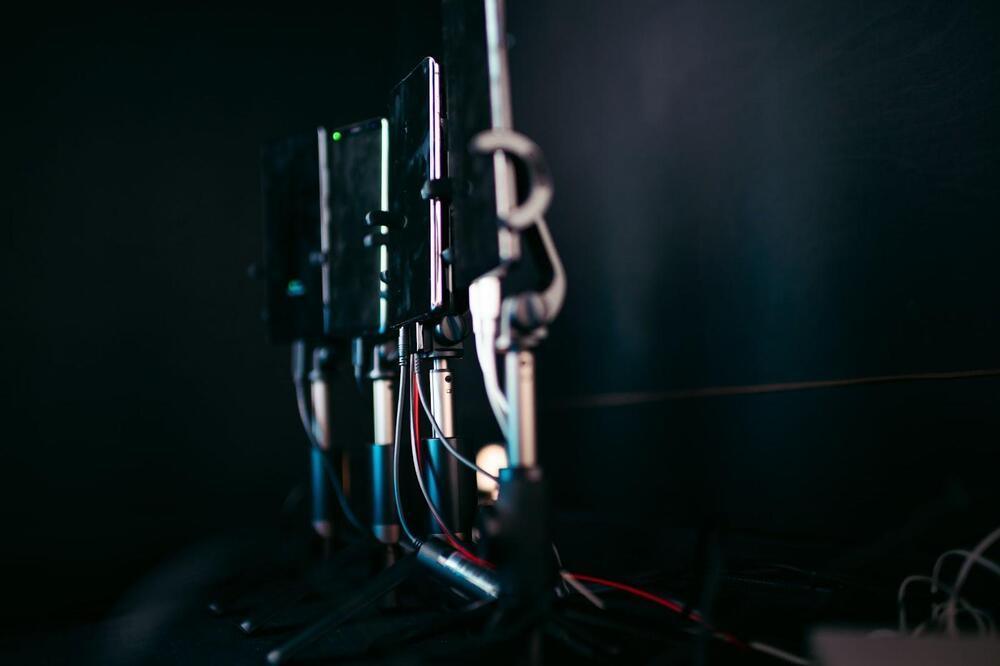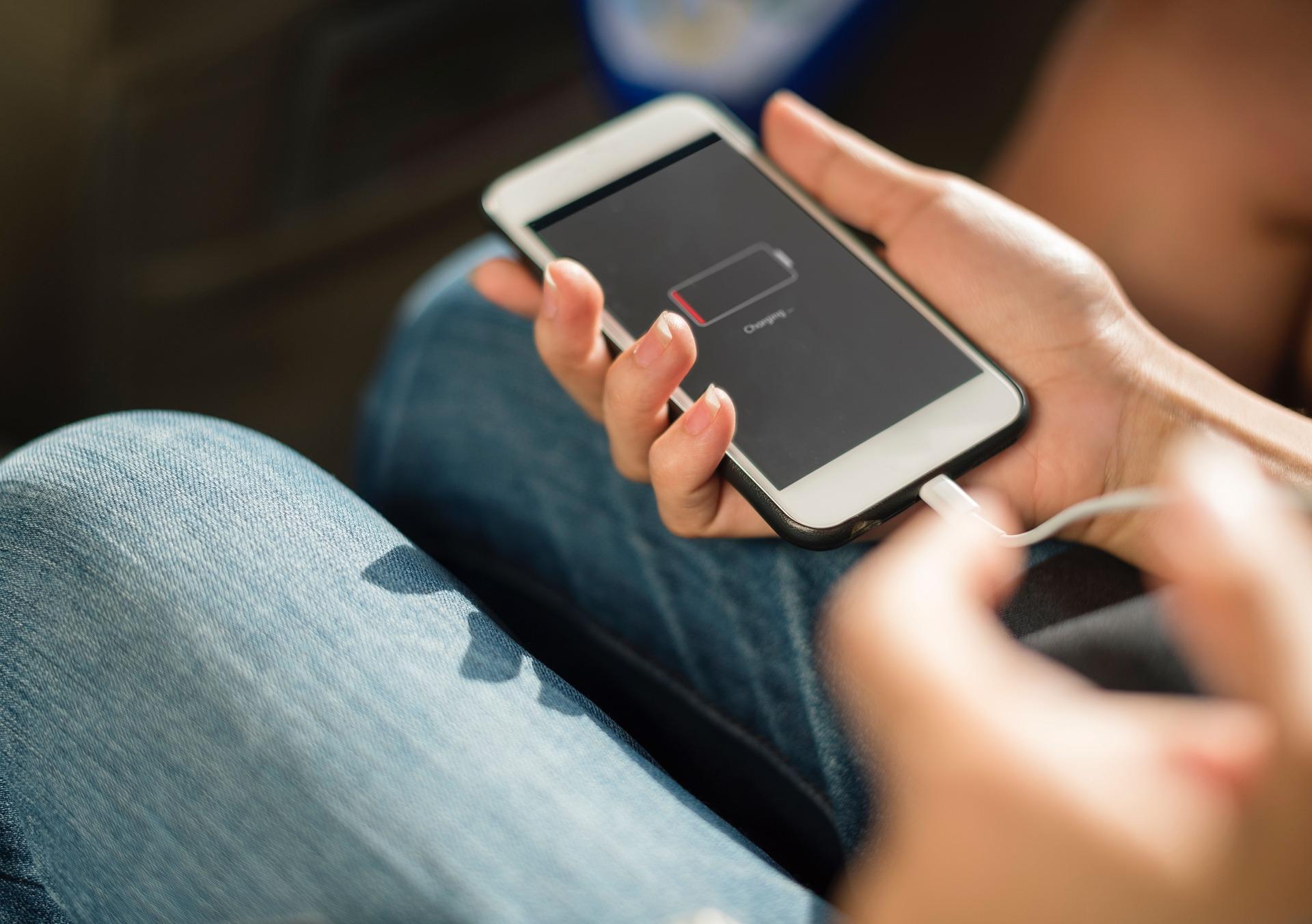Battery life is a crucial factor in mobile device performance, yet most users don’t consider how different apps impact energy consumption—especially when it comes to video calls. At TestDevLab, we specialize in battery testing services, helping consumers and businesses understand how various apps and usage patterns affect device longevity.
In this blog, we take a closer look at battery consumption across popular video call apps. How do different apps compare? Are some significantly more power-hungry than others? And does the operating system choice—Android vs. iOS—make a difference? Let’s dive into the data and find out.
TL;DR
30-second summary
Battery life affects mobile device performance during video calls, app and OS matters. Testing across popular apps like Google Meet, FaceTime and Messenger shows big differences: FaceTime on iOS and Telegram on Android extend call times by up to 126% and 25% respectively compared to less efficient apps like Google Meet. Higher network bitrates often means more battery drain, especially on Android. Choosing power efficient apps can maximize call time, so you can stay connected longer without recharging. These insights help consumers and businesses optimize app usage for better device longevity and performance.
- App Efficiency Varies by Platform: FaceTime on iOS and Telegram on Android consume less power, extend call times significantly compared to Google Meet or Messenger, optimize device battery life.
- Network Usage Affects Battery Drain: Higher bitrates like Google Meet’s 6 Mbps means more battery consumption, lower bitrate apps like Messenger on iOS use less power, more efficient.
- Android vs iOS Performance Gap: Android devices consume more energy overall than iOS, app specific behaviour like Messenger’s erratic bitrate on Android amplifies battery drain.
- Messenger’s Android Anomaly: Messenger on Android spikes to 6 Mbps, consumes more power than its iOS counterpart, shows platform specific inefficiencies that affect call time.
- Informed App Choice Means Longer Life: Choosing power efficient apps like FaceTime or Telegram can extend video call times by hours, crucial for users who want uninterrupted communication.
Methodology and scope of the battery test
Battery usage on mobile devices can be measured in a few ways, like checking the device’s settings or using free apps like Battery Doctor.
At TestDevLab, we use specialized equipment to monitor battery usage in real time for more accurate testing. You can learn more about our methodology and approach in this article: How We Test Mobile App Battery Usage.
Now, let’s take a look at the scope of this testing:
| Apps tested | Android version | iOS version |
|---|---|---|
| Google Meet | 283.0 | - |
| Discord | 262.15 | 238.0 |
| Signal | 7.28.4 | 7.41.3 |
| 2.24.25.77 | 24.25.93 | |
| Messenger | 490.0.42.108 | 489.0.0.17.321 |
| Telegram | 11.6.2 | 11.6.2 |
| 363.0.0.29.80 | 363.0.0.19.87 | |
| Snapchat | 13.23.0.38 | 13.23.0 |
| Facetime | N/A | - |
- Devices tested
- Android: Xiaomi Mi 10 HyperOS 1.0.1 [Android 13]
- iOS: iPhone 12 iOS 18.2.1
- Test procedure
- Before the call - both the test device and the support device are positioned toward a screen displaying dynamic video content.
- Call is started - both user front cameras are enabled
- Start network and battery usage capture
- Hold call for 5 minutes
- Stop the network and battery usage capture
- End call
- Additional information
- In all calls, the other participant was an iPhone 11 device.
- We carried out 3 tests per scenario.
- We ran the tests between January 22 and February 7, 2025.
You may be interested in: Video Call Reliability and Quality Review—Introducing Our New Service.
Test results & analysis
After conducting our tests, it’s time to look at the results and analyze our findings. Let’s start with the network usage.
Network usage
It is useful to examine network data before analyzing battery consumption. While not directly correlated, a higher bitrate is generally associated with better call quality and increased battery consumption.
Note that network usage is not separated into outgoing and incoming streams. Therefore, the video bitrate on each side can be roughly estimated as half of the total usage.

From this data, we can see a split between apps—some maintain a bitrate of around 2 Mbps (1 Mbps per direction), while others use up to 6 Mbps.
A particularly interesting case is Messenger, which consumes over 5 Mbps on the Android version, whereas on iOS, it uses only 1 Mbps.
Feel free to explore the full overtime data graphs here: Graph Sheet.
Battery usage
Now, let’s take a closer look at battery consumption.

From the graphs, we can observe a few interesting trends:
- Higher overall energy consumption on Android compared to iOS.
- The highest battery drain is seen with Google Meet on iOS, which also has the highest network bitrate.
- FaceTime (which had a similar bitrate to Google Meet) and Messenger on iOS (which had a much lower bitrate) showed the lowest energy consumption.
Based on the gathered data, how many hours would a phone last on a full battery while using each app?
See the table below:
| App tested | Android | iOS |
|---|---|---|
| Baseline | 32.13 | 18.91 |
| 7.31 | 4.83 | |
| Messenger | 6.04 | 6.36 |
| Meet | 7.10 | 3.05 |
| Signal | 7.48 | 5.13 |
| Discord | 6.70 | 5.40 |
| Telegram | 7.56 | 4.62 |
| 6.21 | 5.24 | |
| Snapchat | 6.97 | 5.40 |
| Facetime | N/A | 6.90 |
On the Android version, choosing Telegram over Messenger for a video call could extend your conversation time by 1.5 hours, or approximately 25% longer.
On the iOS version, the difference is even more dramatic—opting for FaceTime instead of Google Meet could extend call time by an additional 3.85 hours, marking an increase of 126%!
Feel free to explore the full overtime data graphs here: Graph Sheet.
You may be interested in: Audio and Video Software Industry: 2024 in Review.
The Messenger case
While we didn’t conduct additional investigations into Messenger’s behavior, the significant difference between its performance on Android and iOS raises some interesting questions.

As you can see in the graphs above, Android also starts at a bitrate that is the same as for iOS test, however, during the first minute of the call the usage jumps to different bitrate ranges (2/3/5 Mbps) and finalizes at ~6Mbps.

This change in bitrate (and video quality) can also be noticed in the power consumption graphs - going from 2.2W at start to 3W when bitrate stabilizes.
While we don’t have enough data to explain why this happens, the fact remains that during our testing, Messenger in Android-iOS call behaves differently, leading to higher network and battery usage compared to iOS-iOS call.
Conclusion
Battery life may not be the first factor you consider when choosing a video call app, but as our testing shows, the differences in power consumption between apps can be significant—especially when you’re relying on your phone for extended calls.
Our data reveals that certain apps are more power-efficient than others, and the choice of operating system also plays a role. While apps like FaceTime on iOS and Telegram on Android offer longer battery life, others—such as Google Meet on iOS—can drain your phone much faster. The Messenger anomaly on Android further highlights how app behavior can vary across platforms, affecting both network usage and energy consumption.
Ultimately, if battery life is a priority, making an informed choice about which app to use can help you extend your call time without scrambling for a charger. We hope these insights help you navigate your options more effectively.
FAQ
Most common questions
Which video call apps are most battery efficient?
FaceTime on iOS and Telegram on Android have the longest call times, FaceTime 6.90 hours and Telegram 7.56 hours. These apps optimize power usage, perfect for long calls.
How does network usage affect battery life?
Higher network bitrates like Google Meet’s 6 Mbps means more battery drain, lower bitrate apps like Messenger on iOS consume less power. Efficient network usage can extend call time significantly.
Why does Messenger perform differently on Android vs iOS?
Messenger on Android jumps to a higher bitrate (6 Mbps), more power consumption compared to iOS’s 1 Mbps. This platform specific behaviour reduces call time on Android.
Does the OS matter?
Yes, Android devices consume more energy overall than iOS during video calls. For example Google Meet on iOS drains batteries faster than FaceTime, which is more efficient.
How do I get more call time?
Choose FaceTime or Telegram, both power efficient apps, to get up to 126% more call time on iOS or 25% on Android.
Want Longer Video Calls Without Draining Your Battery?
Are you interested in benchmarking your app against others or gaining deeper insights into battery performance? Contact us to learn more about our battery & data usage testing services.




